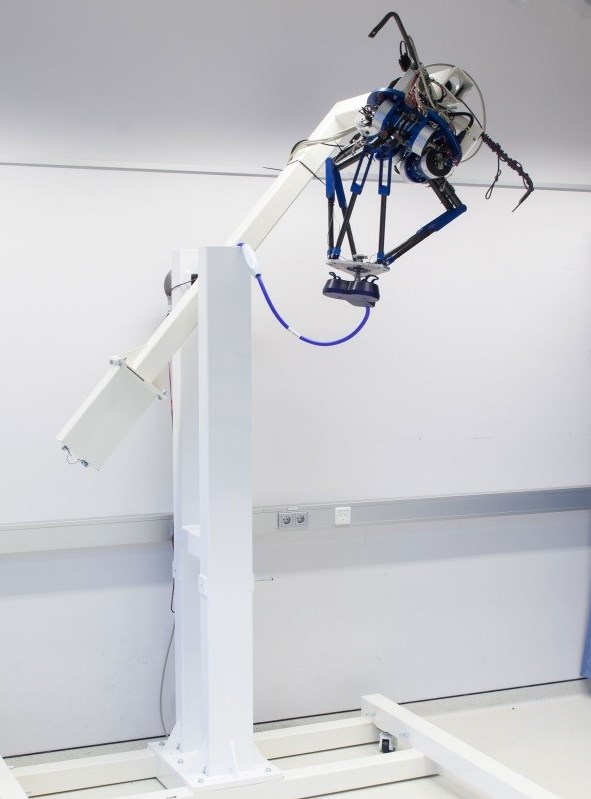Research Group
Prof. dr. ir. H. van der Kooij
Dr. Ir. A.H.A. Stienen
Dr. Ir. M. Wessels
Ir. J.J. de Jong (Contact for additional information)
Project term
August 2012 - July 2015
Project partners
Department of Biomedical Engineering
ANT-Technology
Keywords
Transcranial Magnetic Stimulation, Parallel robotics, Rehabilitation, Treadmill walking, Vision systems
Project Background
Transcranial Magnetic Stimulation (TMS) uses a strong electromagnetic field induced by a magnetic coil to generate small currents inside the brain. The resulting brain activity can be used to identify motor responses, relieves several neurological diseases and may assist in motor rehabilitation. As this stimulation needs to be both precise and repeatable, computer aided neuronavigation and robotized TMS have been developed. Most of the robots currently used for TMS are powerful, industrial robots. Because of safety issues, the speed of these robots is limited excluding them to be used during motor training activities. The goal of the TMS robot, presented in this report, is to overcome these issues and enable the use of robotized TMS during treadmill walking.
For a medical robot, safety considerations are paramount. A TMS robot is designed to operate in contact with the head. Therefore, it is essential that the robot cannot fail in way that will hurt the subject. Safety measures in this design include a soft interaction contact switch, external safety circuit to monitor the operation of the control system, a mechanical design with minimal mass and redundant sensors.
The robot presses the coil against the skull through a safety spring system. Full power to the robot is only allowed when the contact forces are within safety boundaries. This ensures a timely shut down in case of contact loss and prevents high energetic impacts. The coil and safety spring system follow the movement of the head by use of a Hexa manipulator that keeps the focal point of the coil on the same point within the head. This Hexa manipulator is a six-armed parallel mechanism with base mounted motors. This reduces the moving mass to a minimum. The manipulator has a workspace limited to the range of motion required for tracking the head during treadmill walking. To compensate for different subject lengths and stimulation sites the Hexa robot can be moved around the head by the supporting frame.
A 3D optical tracker system measures the position of optical markers on the head of the subject and on the base of the robot. “Point cloud” estimation allows the calculation of the transformations required to steer the robot over the stimulation site. The measured spring force deflection is used to adjust the robot pose such that a constant contact force is maintained.

Publication
De Jong, J. J., Stienen, A. H., van der Wijk, V., Wessels, M., & van der Kooij, H. (2012, June). A method for evaluation and comparison of parallel robots for safe human interaction, applied to robotic TMS. In Biomedical Robotics and Biomechatronics (BioRob), 2012 4th IEEE RAS & EMBS International Conference on (pp. 986-991, Rome, Italy
References
